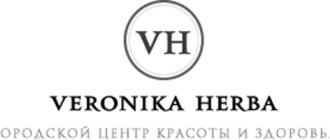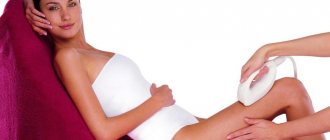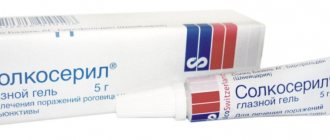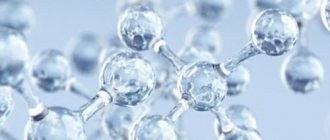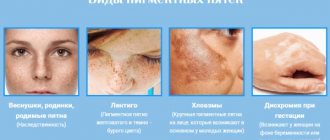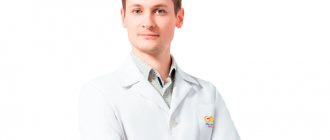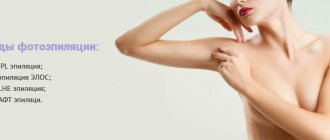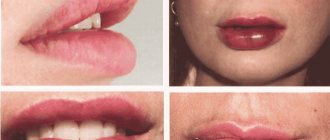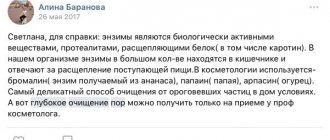Using the procedure photorejuvenation ELOS, which is carried out by experienced specialists at the GMTClinic center, can achieve amazing results in the fight against skin aging.
Photorejuvenation involves improving the condition of the skin due to exposure to a high-frequency pulsed light beam. Skin treatment with light provides a comprehensive rejuvenating effect, comparable in results to surgical lifting, as it activates the intensive production of collagen and elastin in the tissues.
What is ELOS rejuvenation
Photorejuvenation ELOS , or the method of electro-optical synergy, combines light and radio wave effects on problem areas of the skin, due to which active regeneration processes begin in it. This synthesis is superior to many other cosmetic procedures in its effectiveness, and has virtually no side effects. ELOS technology allows you to take into account the individual characteristics of the structure of the skin and select the optimal treatment regimen on an individual basis.
In our center, ELOS rejuvenation is carried out using a certified multifunctional eStyle device from Syneron. Using its four applicators, the following procedures are performed:
- ELOS-rejuvenation;
- ELOS-lifting;
- ELOS acne treatment;
- ELOS hair removal.
Operating principle of the device
Rejuvenation is carried out pointwise, thanks to the influence of light or laser and electromagnetic energy, problem areas are accurately detected and targeted to them. Light pulses detect and act on “targets” to create a temperature contrast between the treated area and adjacent tissue. Light energy is converted into heat, which leads to a drop in the electrical resistance of tissues and gives them the ability to conduct current. The current affects the defects in a localized manner, eliminating them as much as possible, but without affecting the surrounding tissue. This operating principle helps to carry out rejuvenation with maximum comfort.
ELOS technology allows:
- get rid of fine and medium-deep wrinkles;
- improve complexion;
- restore skin elasticity;
- relieve the feeling of tightness and dryness;
- cure acne (acne);
- remove rosacea, remove spider veins, freckles and excessive pigmentation;
- activate metabolic processes and collagen synthesis in tissues;
- get a lifting effect, correct the contour of the face;
- tighten pores, smooth out skin texture;
- get rid of unwanted hair, including light vellus hair.
The technique is used to rejuvenate and improve the quality of the skin of the face, neck, hands, and décolleté.
Preparation for lifting and its implementation
Before E-light rejuvenation, it is not recommended to sunbathe or visit a solarium, as dark skin may develop defects in the form of pigment spots. The cosmetologist gives special recommendations to each patient individually, and before the procedure, the necessary studies are carried out to help identify contraindications.
The procedure is carried out in a cosmetology salon using a machine; it takes from 45 minutes to 2 hours, depending on the initial parameters of the skin. The specialist fully controls the intensity of the energy impact. The nozzles are cooled to 5 degrees Celsius, which helps prevent burns and discomfort.
During rejuvenation, the patient may feel light hot slaps that do not cause any discomfort. To achieve good results, patients need from 3 to 5 sessions every 3-6 weeks.
The procedure has the following effect:
- accelerates the production of collagen and elastin complex;
- improves skin color;
- prevents the appearance of age-related changes;
- smoothes wrinkles;
- improves the contour of the oval face;
- makes the skin more elastic, firm and smooth;
- helps get rid of vascular defects, small scars, age spots, and narrows enlarged pores.
Advantages of photorejuvenation using the ELOS method
- The effect of the procedure accumulates and lasts for a long time. At the end of the course, collagen production continues and the skin aging process slows down significantly.
- The method is atraumatic and virtually has no rehabilitation period. After treating the skin with SR (for rejuvenation) and/or ST (for lifting) attachments, redness and sometimes slight peeling may appear on the skin, which disappear within a short time. ELOS photorejuvenation does not disrupt the patients’ normal course of life and decorative cosmetics can be used immediately after the procedure.
- The non-invasive technique eliminates the possibility of inflammatory processes and infections.
- Comfort of the procedure. The process does not take much time and does not cause significant pain.
Contraindications
- Allergic skin reactions to light and/or sun;
- Taking medications during the previous month that increase the skin's sensitivity to light (tetracycline antibiotics, etc.). Use of retinoids within the last 6 months;
- Pregnancy;
- Precancerous skin conditions, keloid scars;
- Presence of a cardiac pacemaker, defibrillator;
- Malignant skin formations;
- Uncontrolled diabetes mellitus;
- Strong sun tanning, or the use of tanning creams on the skin, etc.;
- Infections that result in disruption of the integrity of the skin (for example: psoriasis, eczema), including those caused by the herpes virus;
- Blood clotting disorders. Taking medications that reduce blood clotting;
- Thromboembolic diseases;
- Laser resurfacing in the last 3 months;
- Nickel allergy (individual);
- Taking OK Diane-35. There may be multiple lightenings.
ELOS acne treatment
ELOS technology is widely known for its ability to effectively treat skin inflammation. A special attachment conducts radiofrequency energy in combination with broadband pulsed light, which affects the sebaceous glands and destroys propionic bacteria in them, which cause acne. Heat also breaks down sebaceous plugs, making the skin smoother. ELOS treatment is effective in the fight against comedones and single acne. It allows you to reduce the intensity of post-acne. Thanks to the ELOS effect, regeneration processes in the skin are resumed, which has a beneficial effect on its general condition. The results of the treatment appear one month after the first procedure. In total, up to 10 sessions of ELOS acne treatment may be required.
LASER BIOREVITALIZATION
This is a procedure during which cocktails based on hyaluronic acid are delivered into the deep layers of the skin using injections. As a result, the skin is moisturized, refreshed, and the synthesis of elastin and collagen is triggered.
For people who avoid injections, laser biorevitalization was created. It involves applying a special preparation with hyaluronic acid to the skin, which is helped to penetrate into the deeper layers by a laser (it is applied to the treated area). This way:
- saturates the skin with moisture;
- improves metabolism;
- reduces the number of wrinkles;
- tightens the epidermis;
- improves its color.
Using a laser, the conducting channels of the dermis are opened. In this case, low molecular weight hyaluronic acid penetrates into the subcutaneous layer in a significant amount (up to 4 ml) to a depth of 4 mm.
Laser biorevitalization is recommended if certain problems arise.
- wrinkles on the face;
- sagging skin;
- flabby outline;
- sensitivity and dryness of the epidermis;
- photoaging;
- puffiness, dark circles under the eyes;
- dermatitis, eczema.
A cosmetologist will suggest this procedure only after examining the face and analyzing existing problems.
WHEN NOT TO USE LASER BIOREVITALIZATION:
- during pregnancy and breastfeeding,
- if there are open wounds or boils or herpes rashes on the face.
- in case of allergic reactions to hyaluronic acid preparations,
- in the presence of voluminous pigmentation or moles;
- patients with diabetes mellitus; tuberculosis, cancer patients.
The following advantages of the technique can be highlighted:
- It eliminates infection with blood-borne diseases.
- Quick recovery after laser without complications or allergies.
- There is no pain felt, because... no skin punctures are made.
- The patient recovers quickly. In rare cases, complications may occur.
How to increase the effectiveness of the ELOS photorejuvenation procedure?
The maximum effectiveness of the photorejuvenation procedure can be achieved by introducing hyaluronic acid injections into the complex therapy. Injection techniques, such as mesotherapy and biorevitalization, perfectly complement hardware techniques, working together to achieve the best results.
First of all, enriching the skin with moisture, vitamins and beneficial microelements can enhance the effect of the photorejuvenation procedure. There is a synergistic effect that gives an extremely useful result.
In addition, this combination provides relief and acceleration of the recovery process after the procedure. The skin is better prepared for any external methods of influence.
Experienced specialists should be entrusted with the development of an individual treatment plan consisting of a list of complementary procedures. Experienced cosmetologists at GMTClinic will help you choose the optimal scheme for rejuvenation and correction of aesthetic imperfections.
Who should not undergo rejuvenation?
Despite the high level of safety of E-light therapy, it has a number of serious contraindications. They can be temporary or permanent; the cosmetologist must find out whether the patient has them at the consultation stage.
There are the following contraindications:
- the presence of malignant and benign neoplasms;
- personal intolerance to sunlight and light rays;
- pregnancy and lactation;
- diabetes;
- systematic or short-term use of certain medications;
- pacemakers and defibrillators;
- the presence of skin diseases in the acute stage;
- strong tan.
MICROCURRENTS
Microcurrents for the face are a special type of physiotherapy, the main goal of which is to rejuvenate the skin using pulsed current that has a healing effect.
This effect is based on weak pulsed currents, whose characteristics are in many ways similar to the electrical impulses of the human body.
The soft, delicate effect of microcurrents at the cellular level leads to a significant improvement in blood microcirculation and acceleration of metabolic processes.
In addition, they have a beneficial effect on the vascular system, muscles, and subcutaneous fat. The result of this influence is:
- normalizing the electrical charge in cell membranes;
- blood microcirculation becomes better, which means that all the required nutrients and oxygen will be delivered to the cells faster;
- cellular regeneration, synthesis of hyaluronic acid, collagen and elastin proteins occur at a faster pace.
- changes also occur in the muscular lining of the blood vessels - its tone noticeably increases. But with permeability, on the contrary, a problem arises; it decreases. As a result of this, lymphatic outflow increases, toxins and metabolic products are quickly removed from the cells.
Microcurrents are carried out on special devices that generate current. The procedure is carried out using electrodes of various shapes and structures.
Such procedures are especially useful for aging skin. Due to the fact that the alternating current parameters are insignificant, the procedures are not addictive and each session is perceived by the body as something new and useful.
The duration of the course is prescribed by a dermatologist and ranges from 6 to 12 sessions. The results obtained last for about 6 months.
INDICATIONS FOR MICROCURRENT THERAPY OF THE FACIAL
- the appearance of numerous acne and rosacea;
- sagging skin;
- development of dermatosis and atopic dermatitis;
- the appearance of facial wrinkles;
- presence of pigmentation, stale complexion;
- increased muscle tone;
- persistent damage to skin vessels;
- the presence of stretch marks and scars;
- aging and very dry skin;
- swelling of the face.
Not everyone is allowed to use microcurrents. There are also contraindications that you need to be aware of.
- pregnancy;
- breastfeeding period;
- individual intolerance to microcurrents;
- oncological diseases and the presence of benign formations;
- severe thrombophlebitis;
- a condition when there are serious pathologies of internal organs;
- recent heart attack, stroke;
- seizures (especially epilepsy);
- the presence of metal implants (meaning pacemakers, pins in bones);
- recently undergone chemical peeling of the face.
